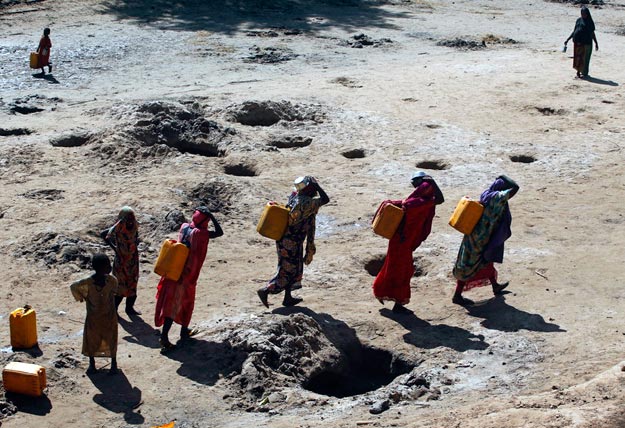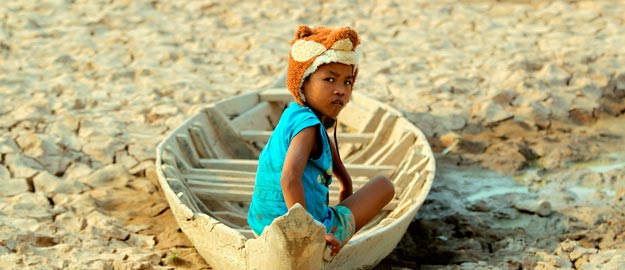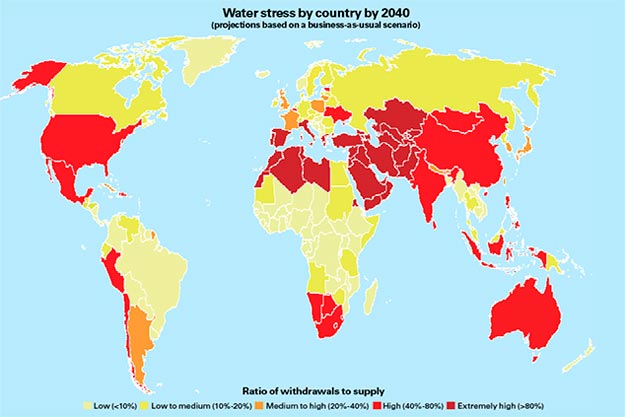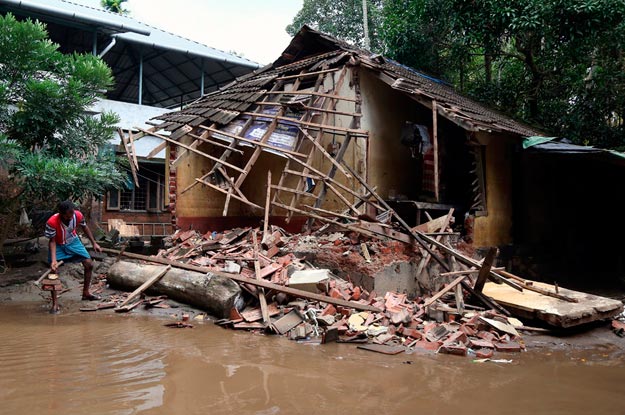Most people assume that refugees are pushed to leave their homes because of violence and political conflict. While that is often the case, climate change and global water shortages play a much larger role in human migration than most realize. The UN’s 2016 World Water Development Report estimated that by 2050, around 200 million people could be displaced as a result of desertification, sea level rise and increased extreme weather events.
There is no denying that our planet is suffering from climate change, and that it affects us all. However, the most affected are always those living in more vulnerable areas – locations with arid or semi-arid climates, such as Africa and the Middle East. Every year, thousands of people are forced to leave their homes as a direct consequence of climate-related impediments to drinking water and food production.
This piece will give examples of the many instances in which water was the beating heart of community displacement, and how recently developed solutions can prevent disastrous outcomes in the future.
Climate-induced displacements: the reason people move
Human beings have been slow to react to climate change. According to the journal Nature Climate Change, in less than 30 years, 25% of the planet will experience serious drought and desertification. Every year, dry seasons in affected regions get longer and longer, with the lack of water directly impacting agriculture. This precarious situation forces families from these areas to consider dramatic life changes. In these particular cases, the migration is not related to a sudden natural disaster, but is a response to a progressive reduction of water resources that affects their chances of survival.
In the Mediterranean region, water resources are already stretched, while seasonal precipitation varies and the temperature keeps increasing. In the upcoming decades, extreme weather manifestations are expected to rise in the Middle East and northern Africa. Jordan is the country with the third-highest water insecurity in the world, after Saudi Arabia and the United Arab Emirates. However, Saudi Arabia and the UAE have developed technology to desalinate water in large amounts. In Jordan, meanwhile, 40% of all groundwater is expected to deplete by 2030.
Agricultural production in South and East Asia has already declined due to water stress, increasing temperatures and natural disasters. Some of the highest malnutrition rates worldwide are found in China, India and Pakistan, where more than 40% of the world’s youth resides.
Triggering events that set migration into motion
According to water.org, an estimated $260 billion is lost globally each year due to the lack of fresh water and sanitation. When agriculture is affected by water shortages, the economic and social consequences are enormous. Drought in agriculture leads to food shortages and increases the price of basic products. When food is lacking, women feed their husbands and children first. Their empty stomachs affect their health and reproductive capabilities. Additionally, women are generally in charge of water collection. Instead of working for an income, they spent hours walking to distant water resources. In Ethiopia, girls are prevented from going to school to help collect water. Researchers at the George Washington University in Washington, DC, estimate that at least 17 million women and girls in Africa collect water every day. Children – mostly girls – are out very late at night or as early as 4am in search of water. Meanwhile, 30% of jobs in the industry sector and 10% of jobs in the services sector are heavily dependent on water.

On women’s shoulders … women carry jerry cans of water from shallow wells dug in the Shabelle River bed in Somalia, which is dry due to drought.
New technology as an answer to the shortage
With the changing climate leading to increased drought, flooding and water pollution, there is a higher risk of conflicts related to water use, poverty and migration. Countries facing increased water insecurity need a true transformation based on water-related governance. All the rivers across Viet Nam, for example, could potentially provide an abundant supply of water. However, due to inadequate physical infrastructure and financial capacity, this resource cannot be properly utilized. Mexico City is also suffering from heavy rainfalls and flooding, but due to a similar lack of infrastructure more than 40% of the water is lost.
In this vacuum, trail-blazing technologies can create a source of fresh, clean drinking water for vulnerable citizens while significantly improving the quality of life and providing an opportunity to break the cycle of poverty.
In August 2018, flooding and devastation hit the southern Indian state of Kerala. Clean drinking water was urgently needed for thousands of families. Water-to-air tech company Watergen – for which I am the chairman – provided its GEN-350 machine, which plugs into the electricity supply and makes use of air conditioning/dehumidifier technology to pull pure drinking water from the atmosphere.
The GEN-350 generates up to 900 litres of clean water per day, and was specially designed to be used in schools, hospitals, commercial and residential buildings.
Shortly after the floods hit Kerala, the machine supplied water to the hundreds of thousands of people observing the annual pilgrimage season in memory of the Christian orthodox saint Gregorios of Parumala, in an area where humidity levels are high and water sources are frequently contaminated due to hydrological hazards. Watergen has also successfully launched its large-scale water generator, known as the AWG (for “atmospheric water generator”), which was especially designed to meet the needs of villages, towns and large residential and office structures. It can generate up to 5,000 litres of clean water per day, and doesn’t require any special infrastructure other than an electricity supply. Watergen’s innovative solution filled the void created by the floods and the lack of infrastructure, and provided a stable and clean source of clean drinking water directly to the people on the ground.
Cost-effective wastewater treatment solutions are another example of new technologies’ importance in helping populations acing water shortages. Fluence is an example of a company providing sustainable wastewater solutions for communities, industries and remote sites. Its anaerobic treatment technologies, which use bacteria to break down organic pollutants, convert wastewater and sludge into biogas, which can then be used to produce electricity and thermal energy. These solutions allow for the effective and smart management of water, which is critical as water needs rise around the world.
These examples show the critical importance of technological innovation in meeting the global demand for drinking water. This global demand is rising with the world’s booming population, just as the traditional methods of providing clean drinking water are becoming more scarce. Water insecurity is a primary cause of displacement. New technologies not only provide clean drinking water for immediate use, but also create pathways to stable work and livelihoods. With new devices being produced every day, technologies like those explored above are creating jobs and sources of income that never existed before – but will form a vital component of the future economy.
Source: https://www.weforum.org/
Dear User/Visitor! Please, answer on our questions: tick off one of the positions – your answer will make us able to improve our site and make it more interesting and useful!




